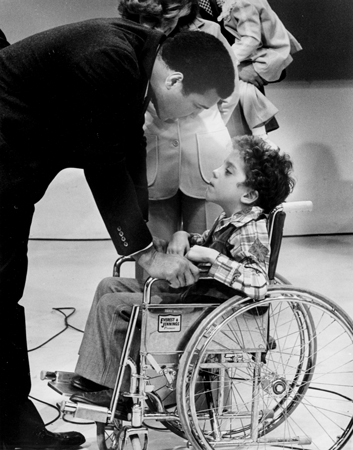Just about everyone has heard the phrase, “You are the company you keep.” The concept is so simple that it’s easy to overlook its powerful effect on human psychology.
But just think about what that means in people’s day-to-day lives. As early as four years of age, children form cliques in school, gravitating to other like-minded kids on the playground. Very quickly, the way other children perceive someone is linked to their specific clique — they can be branded as a “cool” kid, a “quiet” kid, or even a “troublemaker,” with this association following them throughout grade school.
Or, as you grow older, this same concept has a powerful effect on where you choose to live or work. There’s a reason real estate experts always say “Location, location, location.” It’s because the perceived equity of a house or storefront is directly tied to the surrounding environment.
In advertising, we refer to this psychological effect as “borrowed equity.” It’s a particularly important idea for marketers because of its role in shifting or reinforcing consumer perceptions. Whether you’re launching your brand in the marketplace, repositioning what you stand for, or need to continue reinforcing an existing image, marketers everywhere are constantly devising strategies to leverage borrowed equity.
And why not? By marrying brand identities with relevant properties — those that have already built equity in the hearts and minds of consumers — we can create opportunities for clients to participate, enhance the experience, and be a part of the fan narrative. Just think about the powerful emotional connection that consumers have with sports teams, athletes or other celebrities. Partnerships with these entities can unlock a tremendous amount of brand love through association.
 |
Muhammad Ali changed public perception through his support of humanitarian causes.
Photo by: GETTY IMAGES
|
That being said: It’s not enough anymore to just slap a “presented by” logo on an ad. You can’t fuel borrowed equity without real investment and commitment; marketers need universal, powerful connection points to build a relationship and give fans a story to remember.
Here are a few guidelines for getting started:
■
Don’t start with a specific event or athlete in mind. Instead, first think about the brand perception you want to drive. Then map out all of the properties in the marketplace that connote that specific image. Sounds simple, but in doing so, I’ve found that brands are often surprised by what they find. Your map can take you to some unexpected activation territories. For example, Magnum is an ice cream bar, but the brand plays heavily in the high fashion space, collaborating with personalities such as Kendall Jenner, Hailey Baldwin, and Suki Waterhouse. One would not intuitively expect an ice cream brand to operate within fashion, but it’s seen success in positioning itself alongside other “insatiable” entities to fuel perception.
■
It’s not just about you. When considering a new activation, borrowed equity also depends on the other brands involved. Research the other companies that are sponsoring or advertising within a given property that you’re looking to partner with — the perception of the brands that you’re surrounded by has a big impact. For example, if you’re a brand that is endeavoring to increase its “cool credentials” and reach a younger audience, you wouldn’t want to sponsor a property such as the Masters that’s saturated with brands that are trying to appeal to an older, more established consumer base. However, the NBA, SXSW or Coachella could be viable options, given their sponsors are largely composed of brands that attract a younger, trendier consumer base.
■
Change doesn’t happen overnight. Depending on how much you want to change brand perceptions, you need to make sure there’s an appropriate cadence to your strategy around borrowed equity. If you try to rush things, you won’t gain any ground. For example, imagine consumer reactions if Pabst Blue Ribbon suddenly became the official beer of the U.S. Open Tennis Championships overnight. It wouldn’t be considered credible by many people.
But if it gradually appeared in more premium places over time, and then eventually swung the equity pendulum to the U.S. Open, it would reinforce that shift in perception. Muhammad Ali is a great example of this — an athlete, a legend, who successfully changed people’s perceptions of him over the years as he spoke out more about politics and current events, and devoted himself to humanitarian causes. But it wasn’t overnight.
■
Know your rules. If you’re leveraging the borrowed equity of a tentpole event, it usually comes with its own set of rules and regulations. Whether you’re an official sponsor, or unofficially trying to borrow equity through a guerrilla approach, what you can and can’t do varies greatly, and if you’re caught breaking the rules, marketers risk having to completely remove content, pay a fine or, worst case, go to court.
Nowhere has this been more evident than over the summer at the Rio Olympics, where brands that weren’t official International Olympic Committee sponsors had to follow guidelines around what ads they could air, what hashtags they could use, and what imagery they could publish. It undoubtedly presented big challenges for nonsponsor brands, but there were still some, like Under Armour, that found creative ways to leverage the equity of this event and become part of this moment in culture. During a time period when national pride is at its peak, that is some serious equity.
Joshua Spiegelman (joshua.spiegelman@mindshareworld.com) is managing director at Mindshare Spotlight, the North America sports and entertainment partnerships unit of global media agency Mindshare.





